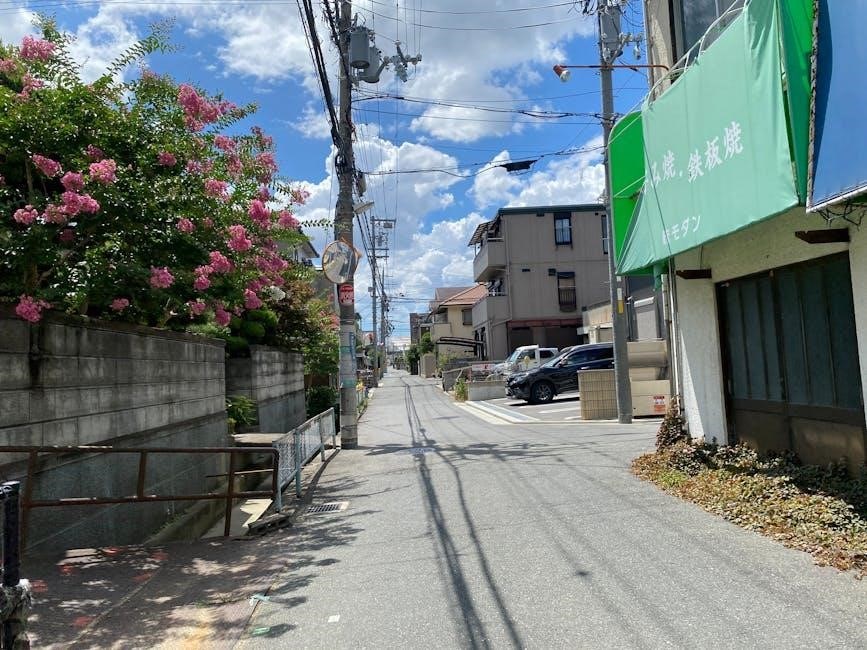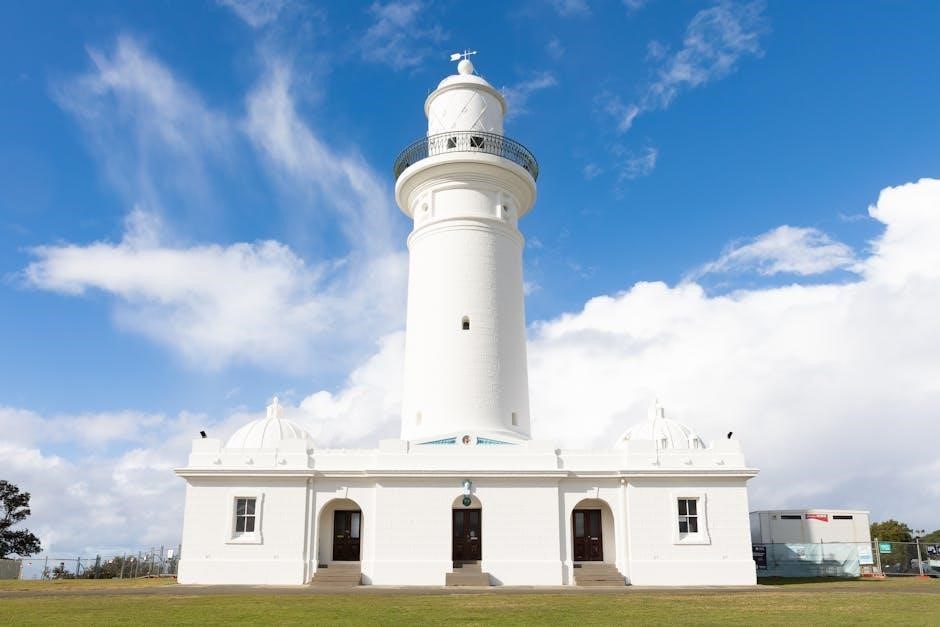Overview of the SPCC Rule
The SPCC Rule (40 CFR Part 112) is a regulation aimed at preventing oil spills and ensuring effective containment measures․ It applies to facilities storing oil and requires implementation of spill prevention, control, and countermeasure plans․ Regional inspectors play a key role in enforcing compliance, reviewing plans, and conducting inspections to protect navigable waters and shorelines from oil discharges․
1․1․ Definition and Purpose of the SPCC Rule
The SPCC Rule, codified in 40 CFR Part 112, is a federal regulation designed to prevent oil spills and ensure effective containment measures․ It requires facilities storing oil in quantities exceeding certain thresholds to implement spill prevention, control, and countermeasure plans․ The primary purpose is to safeguard navigable waters and adjoining shorelines from oil discharges․ By mandating proactive measures, the rule aims to minimize environmental risks and ensure compliance through structured plans and inspections․ It applies to a wide range of facilities, emphasizing preparedness and environmental protection․
1․2․ Key Provisions of the SPCC Rule (40 CFR Part 112)
The SPCC Rule outlines specific requirements for facilities to prevent oil spills․ Key provisions include developing and implementing SPCC Plans, conducting regular inspections, and maintaining records․ Facilities must ensure secondary containment for bulk storage containers, with exceptions granted under impracticability determinations․ Integrity testing of containers and associated equipment is mandated, along with adequate training for personnel․ The rule also addresses environmental equivalence, allowing alternative measures that provide equal protection․ These provisions aim to create a comprehensive framework for oil storage and handling, ensuring compliance and minimizing ecological risks through proactive measures and consistent enforcement․

Role of Regional Inspectors in SPCC Implementation
Regional inspectors review SPCC plans, conduct on-site inspections, and ensure facilities comply with 40 CFR Part 112․ They verify implementation, address non-compliance, and enforce regulatory requirements․
2․1․ Responsibilities of Regional Inspectors
Regional inspectors are tasked with evaluating facilities’ adherence to the SPCC rule․ They conduct thorough reviews of SPCC plans, assess compliance with regulatory requirements, and perform on-site inspections; Inspectors verify the implementation of spill prevention measures, check secondary containment structures, and ensure proper documentation․ They also identify potential environmental risks and address any deviations from the rule․ Additionally, inspectors provide feedback to facility owners and operators to help them achieve compliance․ Their role is crucial in safeguarding against oil spills and protecting navigable waters, ensuring a safe and environmentally responsible operation of regulated facilities․
2․2․ Inspector Training and Certification Requirements
Regional inspectors must undergo specialized training to ensure proficiency in SPCC rule enforcement․ The EPA provides structured training programs covering regulatory requirements, inspection techniques, and environmental equivalence provisions․ Inspectors learn to evaluate SPCC plans, conduct on-site assessments, and identify non-compliance issues․ Certification is mandatory, requiring inspectors to complete these programs and stay updated on regulatory changes․ Annual training updates ensure inspectors remain informed about emerging trends and modifications to the SPCC rule․ This comprehensive approach ensures consistent and accurate enforcement of the regulation, protecting environmental integrity and promoting compliance across regulated facilities․

Regulatory Framework for SPCC Inspections
The SPCC rule (40 CFR Part 112) establishes a regulatory framework for preventing oil spills and ensuring compliance through inspections and enforcement․ It outlines requirements for facility preparedness and response, with regional inspectors playing a critical role in enforcing these standards to protect environmental resources․
3․1․ Applicability of the SPCC Rule
The SPCC Rule applies to facilities storing oil in quantities exceeding 1,320 gallons in aboveground containers or 42,000 gallons in underground containers․ It targets operations that could discharge oil into navigable waters or shorelines․ Regional inspectors assess whether facilities meet these thresholds and require implementation of SPCC plans․ The rule also excludes certain equipment, such as oil-filled operational machinery, from storage container definitions․ Compliance is mandatory for eligible facilities to ensure environmental protection through prevention and preparedness measures․
3․2․ Facility Classification and Compliance Requirements
Facilities are classified based on oil storage capacity and potential spill risks․ Class I facilities store over 1,320 gallons of oil in aboveground containers or 42,000 gallons underground, requiring full SPCC plan implementation․ Class II and III facilities have lower thresholds but must still meet specific prevention and control measures․ Compliance requirements vary by classification, ensuring proportional environmental protection․ Inspectors assess facility classification to enforce appropriate standards, focusing on spill prevention, containment, and countermeasure strategies tailored to each category․

Inspection and Evaluation Process
The SPCC inspection process involves pre-inspection planning, on-site visual checks, and testing to ensure facilities comply with prevention and control measures, documenting findings for regulatory review and environmental protection․
4․1․ Pre-Inspection Preparation and Planning
Pre-inspection preparation involves reviewing the facility’s SPCC plan, evaluating environmental equivalence claims, and identifying potential vulnerabilities․ Inspectors use checklists to ensure thoroughness and consistency․ They also analyze the facility’s layout, oil storage capacities, and prior compliance history to focus on high-risk areas․ Understanding the facility’s operations and spill prevention measures is critical for effective planning․ This step ensures inspections are efficient and targeted, addressing key requirements like secondary containment and integrity testing․ Proper preparation enables inspectors to identify non-compliance issues early and verify adherence to regulatory standards, ultimately protecting environmental resources from oil spills․
4․2․ Conducting On-Site Visual Inspections
On-site visual inspections are critical for verifying compliance with SPCC requirements․ Inspectors examine storage containers, secondary containment systems, and spill prevention equipment․ They check for signs of wear, corrosion, or damage that could lead to oil leaks․ Visual assessments ensure that containment measures meet regulatory standards and function as intended․ Inspectors also validate the implementation of best management practices and ensure proper labeling and signage․ Documentation of findings is essential for reporting and follow-up actions․ These inspections help prevent potential spills by identifying deficiencies early, ensuring facilities maintain environmental compliance and safeguarding against oil discharges into navigable waters․
4․3․ Testing and Evaluation of SPCC Measures
Testing and evaluation of SPCC measures ensure the integrity and effectiveness of spill prevention and containment systems․ Inspectors verify that facilities conduct regular integrity testing, such as pressure tests or thickness measurements, to identify potential weaknesses․ Visual inspections and operational checks are also performed to assess the condition of containers and secondary containment structures․ Testing frequency varies based on the type of equipment and its age․ Documentation of test results is required to demonstrate compliance․ Inspectors review these records to ensure adherence to SPCC standards and address any deficiencies promptly, minimizing the risk of oil spills and environmental harm․
4․4․ Documentation and Reporting Requirements
Facilities must maintain detailed records of SPCC measures, including integrity test results, inspection reports, and spill response actions․ Documentation must be readily available for inspector review․ Regional inspectors verify that all testing, maintenance, and corrective actions are properly recorded․ Facilities are also required to submit reports to the EPA in cases of significant spills or non-compliance․ Accurate and complete documentation ensures transparency and accountability, helping to enforce regulatory standards․ Proper recordkeeping demonstrates a facility’s commitment to environmental protection and compliance with the SPCC rule, while also providing a clear audit trail for inspectors to evaluate adherence to requirements․

Environmental Equivalence and Compliance
Environmental equivalence allows facilities to use alternative measures that provide equivalent protection under the SPCC rule, ensuring compliance while offering flexibility in meeting regulatory standards effectively․
5․1․ Understanding Environmental Equivalence Provisions
Environmental equivalence provisions under the SPCC rule allow facilities to use alternative measures that provide equivalent environmental protection․ These provisions enable flexibility for sites where traditional requirements may not be practicable․ The guidance document outlines eligible measures and clarifies policy areas, ensuring consistent application․ Inspectors play a crucial role in reviewing these alternatives to confirm they meet regulatory standards and protect navigable waters effectively․ Proper documentation is essential to validate equivalence claims and demonstrate compliance with the SPCC rule’s objectives․
5․2․ Eligibility Criteria for Environmental Equivalence
Eligibility for environmental equivalence under the SPCC rule requires facilities to demonstrate that alternative measures provide equivalent protection against oil spills․ Facilities must meet specific criteria, including the type and volume of oil stored, site-specific conditions, and the effectiveness of proposed alternatives․ The EPA evaluates whether these measures prevent oil discharges as effectively as traditional requirements․ Environmental equivalence is typically considered for sites where standard measures are impracticable due to technical or physical constraints․ Inspectors review these claims to ensure compliance with regulatory standards and environmental protection goals while allowing flexibility for unique facility needs․
5․3․ Inspector’s Role in Reviewing Environmental Equivalence Claims
Inspectors play a critical role in evaluating environmental equivalence claims by ensuring facilities meet regulatory standards․ They review documentation to verify that alternative measures provide equivalent environmental protection․ Inspectors assess site-specific conditions, evaluate the effectiveness of proposed alternatives, and ensure compliance with SPCC requirements․ They must confirm that the measures prevent oil discharges as effectively as traditional methods․ The EPA allows flexibility for unique facility needs, but inspectors must ensure that environmental protection is not compromised․ This process ensures that facilities can innovate while maintaining compliance, balancing regulatory flexibility with environmental safeguards․
Secondary Containment Requirements
Secondary containment prevents oil spills from reaching navigable waters and shorelines, ensuring environmental protection through effective storage and control measures as outlined in the SPCC Rule․
6․1․ Definition and Purpose of Secondary Containment
Secondary containment is a system designed to hold and prevent the release of oil in the event of a primary containment failure․ Its primary purpose is to safeguard against environmental damage by ensuring spills are confined․ According to the SPCC Rule, secondary containment must be implemented where necessary, providing an additional layer of protection for navigable waters and shorelines․ This mechanism is crucial for facilities storing oil, as it minimizes ecological risks and ensures compliance with federal regulations aimed at preventing oil discharges․
6․2․ Impracticability Determinations for Secondary Containment
Impracticability determinations allow facilities to forego secondary containment if it is not feasible due to technical or financial reasons․ Facilities must document why secondary containment is impractical, addressing factors like site constraints or economic hardship․ The determination must be reviewed and approved by the EPA, ensuring alternative measures are in place to prevent oil discharges․ This provision balances environmental protection with operational realities, providing flexibility while maintaining compliance with SPCC Rule objectives․
6․3․ Examples of Proper Secondary Containment Documentation
Proper secondary containment documentation includes detailed design plans, certification statements from licensed engineers, and records of regular inspections․ Examples are:
- Design plans showing the containment system’s capacity and structural integrity․
- Inspection records documenting periodic testing and maintenance activities․
- Engineer certifications confirming compliance with SPCC requirements․
- Impracticability determinations with alternative measures described․
- Photographic evidence of containment structures and their condition․
These documents ensure transparency and accountability, enabling inspectors to verify compliance effectively․ Proper documentation demonstrates a facility’s commitment to environmental protection and regulatory adherence․

Integrity Testing and Maintenance
Integrity testing ensures containment systems function properly, while maintenance sustains their effectiveness․ Regular inspections and repairs prevent failures, safeguarding against oil spills and ensuring SPCC compliance․
7․1․ Frequency and Types of Integrity Testing
Integrity testing is critical to ensure containment systems function as designed․ Visual inspections are typically required annually, while more comprehensive testing, such as hydrostatic or thickness measurements, may occur every 5-10 years․ These tests help identify potential weaknesses or degradation in equipment like tanks and pipes․ The frequency and type of testing depend on the system’s age, material, and historical performance․ Proper documentation of test results is essential for compliance and to demonstrate proactive maintenance․ Regular testing not only prevents oil spills but also ensures the effectiveness of SPCC measures in protecting navigable waters and adjoining shorelines․
7․2․ Recordkeeping Requirements for Testing and Maintenance
Facilities must maintain detailed records of all integrity testing and maintenance activities․ These records should include test results, dates, methods used, and any corrective actions taken․ Documentation must be retained for at least three years and made available during inspections․ Proper recordkeeping ensures compliance with SPCC requirements and demonstrates adherence to regulatory standards․ Incomplete or missing records can result in non-compliance findings․ Accurate and organized documentation is essential for audits, inspections, and maintaining the integrity of spill prevention measures․ It also provides a clear history of a facility’s commitment to environmental protection and regulatory adherence․

Handling Non-Compliance and Enforcement
Facilities found in non-compliance may face enforcement actions, including penalties and corrective measures․ The EPA ensures compliance through inspections, addressing violations, and imposing fines to protect environmental integrity․
8․1․ Identifying and Addressing Non-Compliance Issues
Regional inspectors identify non-compliance through thorough inspections, reviewing SPCC plans, and verifying implementation of required measures․ Issues may include inadequate secondary containment, poor inspection records, or insufficient training․ Once non-compliance is identified, inspectors work with facilities to correct violations, often through corrective action plans․ Facilities are required to address deficiencies promptly to avoid enforcement actions; The EPA emphasizes the importance of cooperation and timely resolution to ensure environmental protection and prevent potential oil spills․ Proper documentation and follow-up ensure that compliance is achieved and maintained effectively․
8․2․ Enforcement Actions and Penalties for Non-Compliance
Facilities found in non-compliance with SPCC requirements may face enforcement actions, including fines and penalties․ The EPA imposes monetary penalties based on the severity of violations, with amounts varying by case․ For example, Carlo Ditta, Inc․ was fined $2,250 for inadequate SPCC plans․ Enforcement actions aim to ensure corrective measures are implemented to prevent oil spills․ The EPA may also issue compliance orders or seek legal action․ Repeat violations can result in higher penalties․ Facilities are encouraged to address issues promptly to avoid escalating enforcement measures and protect environmental resources from potential harm․ Penalties serve as a deterrent to non-compliance․

Compliance Dates and Extensions
Compliance dates for SPCC rule were extended to November 2009 and later proposed for July 1, allowing facilities time to implement required modifications and updates effectively․
9․1․ Overview of SPCC Compliance Dates
The SPCC rule established compliance dates to ensure facilities implement spill prevention measures effectively․ Initially set, these dates were later extended to November 2009 to provide facilities additional time for compliance․ This extension allowed entities to adapt to regulatory changes and implement necessary modifications without undue hardship․ The EPA periodically reviews and updates compliance timelines to align with regulatory amendments, ensuring facilities remain in compliance and environmental protections are maintained․ These adjustments reflect the agency’s commitment to balancing strict enforcement with practical implementation timelines․
9․2․ Extensions and Modifications to Compliance Deadlines
The EPA has issued extensions and modifications to SPCC compliance deadlines to accommodate facility needs and regulatory updates․ These adjustments provide facilities additional time to implement required changes, ensuring they meet updated standards without operational disruptions․ Extensions were notably granted to July 1, 2010, and later to November 2009, reflecting the agency’s responsiveness to stakeholder feedback; Modifications often coincide with regulatory amendments, offering clarity and flexibility․ Such changes ensure that facilities can achieve and maintain compliance effectively, aligning with the SPCC rule’s objectives of environmental protection through proactive spill prevention and control measures․

Best Practices for SPCC Inspections
Effective communication with facility owners/operators and utilizing EPA resources, such as checklists and the Inspection and Audit Manual, ensure thorough and consistent compliance evaluations․
10․1․ Effective Communication with Facility Owners/Operators
Clear and transparent communication is essential for successful SPCC inspections․ Regional inspectors should engage facility owners/operators in discussions to ensure understanding of requirements and address concerns promptly․ Providing detailed feedback on inspection findings and offering guidance on corrective actions fosters cooperation and compliance․ Utilizing checklists and visual aids can enhance clarity and ensure alignment with EPA standards․ Open dialogue helps build trust, facilitating smoother inspections and fostering a proactive approach to environmental protection․ Effective communication also enables inspectors to identify potential issues early, preventing larger compliance problems and promoting a culture of accountability․
10․2․ Utilizing Checklists for Consistent Inspections
Consistency in SPCC inspections is achieved through the use of standardized checklists․ These tools ensure that all facilities are evaluated against the same criteria, reducing variability and enhancing compliance outcomes․ Checklists typically cover key areas such as spill prevention measures, secondary containment systems, and recordkeeping requirements․ By systematically addressing each item, inspectors can identify deficiencies and document findings accurately․ Utilizing checklists also streamlines the inspection process, saving time and ensuring that no critical aspects are overlooked․ This approach supports nationwide uniformity in enforcement and helps facility owners/operators understand expectations, ultimately improving overall environmental protection efforts and reducing the risk of oil spills․
10․3․ Continuous Improvement in Inspection Processes
Continuous improvement in SPCC inspection processes ensures that regulatory standards remain effective and adaptive to emerging challenges․ Regional inspectors are encouraged to provide feedback on inspection practices, helping refine procedures and tools․ The EPA updates guidelines and checklists based on this feedback, ensuring inspections remain thorough and relevant․ Training programs for inspectors are regularly revised to reflect new methodologies and technologies․ By fostering a culture of improvement, the inspection process becomes more efficient and aligned with environmental protection goals․ This iterative approach ensures that SPCC inspections consistently meet their intended objectives, safeguarding against oil spills and environmental harm․

Future of SPCC and Inspector Roles
The future of SPCC and inspector roles involves adapting to emerging trends, such as advanced technologies and dynamic regulatory updates, ensuring continued environmental protection and compliance efficiency․
11․1․ Emerging Trends in SPCC Regulation
Emerging trends in SPCC regulation focus on advancing environmental protection through innovative technologies and adaptive compliance strategies․ Digital tools are increasingly being integrated to enhance inspection efficiency and data management․ There is also a growing emphasis on environmental equivalence, allowing facilities to adopt alternative measures that provide equal or greater protection than traditional requirements․ Additionally, the EPA is exploring biodegradable materials and sustainable practices to minimize ecological impact․ These trends reflect a shift toward more dynamic and responsive regulatory frameworks, ensuring SPCC remains effective in addressing modern environmental challenges while maintaining flexibility for regulated facilities․
11․2․ Evolving Responsibilities of Regional Inspectors
Regional inspectors’ roles under the SPCC Rule are expanding to include advanced inspection techniques and data-driven compliance verification․ Inspectors now focus on environmental equivalence assessments and reviewing sustainable practices adopted by facilities․ They are also tasked with ensuring adherence to updated secondary containment requirements and verifying the effectiveness of integrity testing programs․ Additionally, inspectors are increasingly involved in educational outreach, helping facilities understand compliance obligations․ The integration of digital tools for inspection and reporting further enhances their responsibilities, enabling more efficient and accurate evaluations․ These changes reflect the EPA’s commitment to modernizing enforcement and fostering collaborative relationships with regulated entities․
